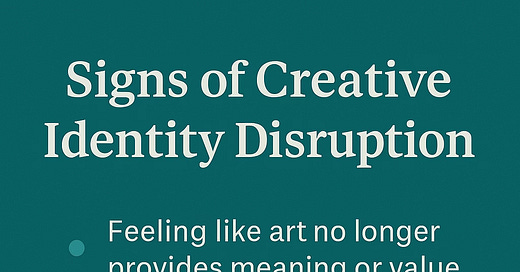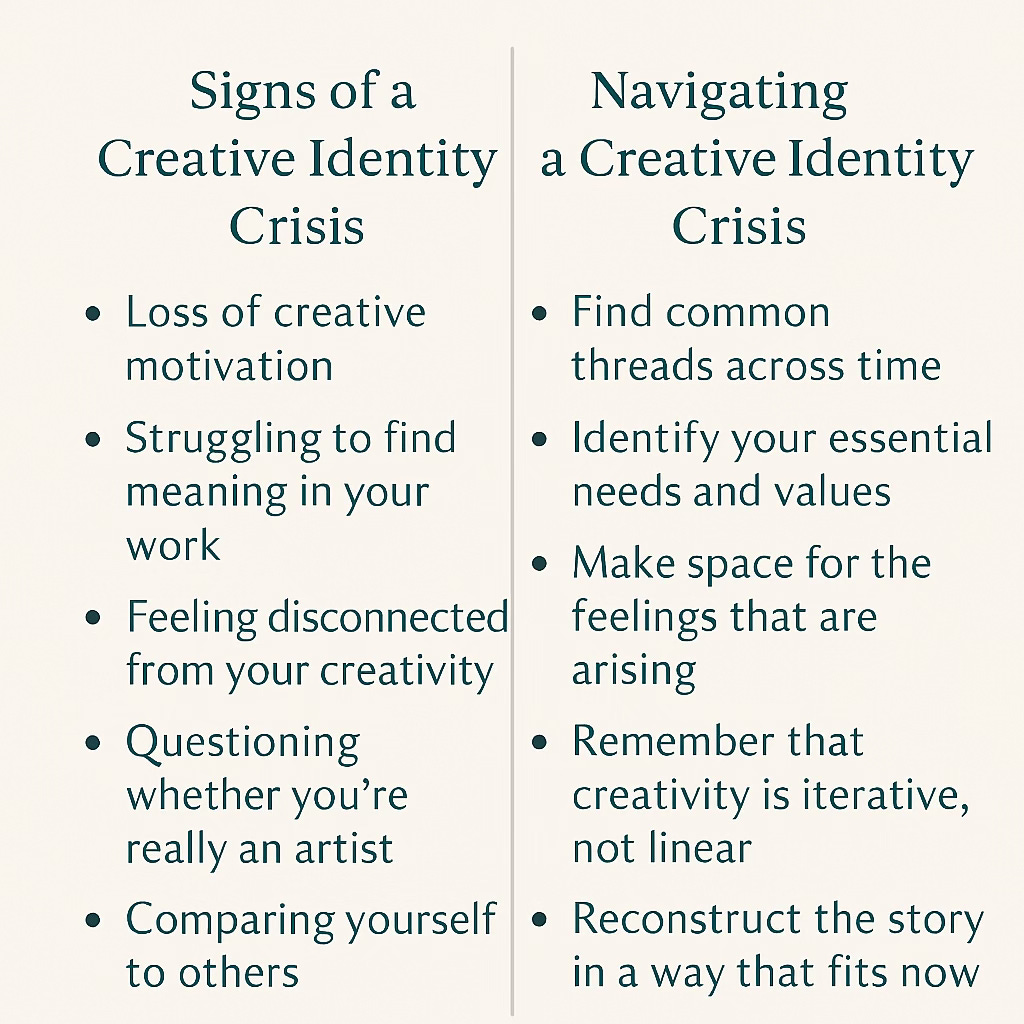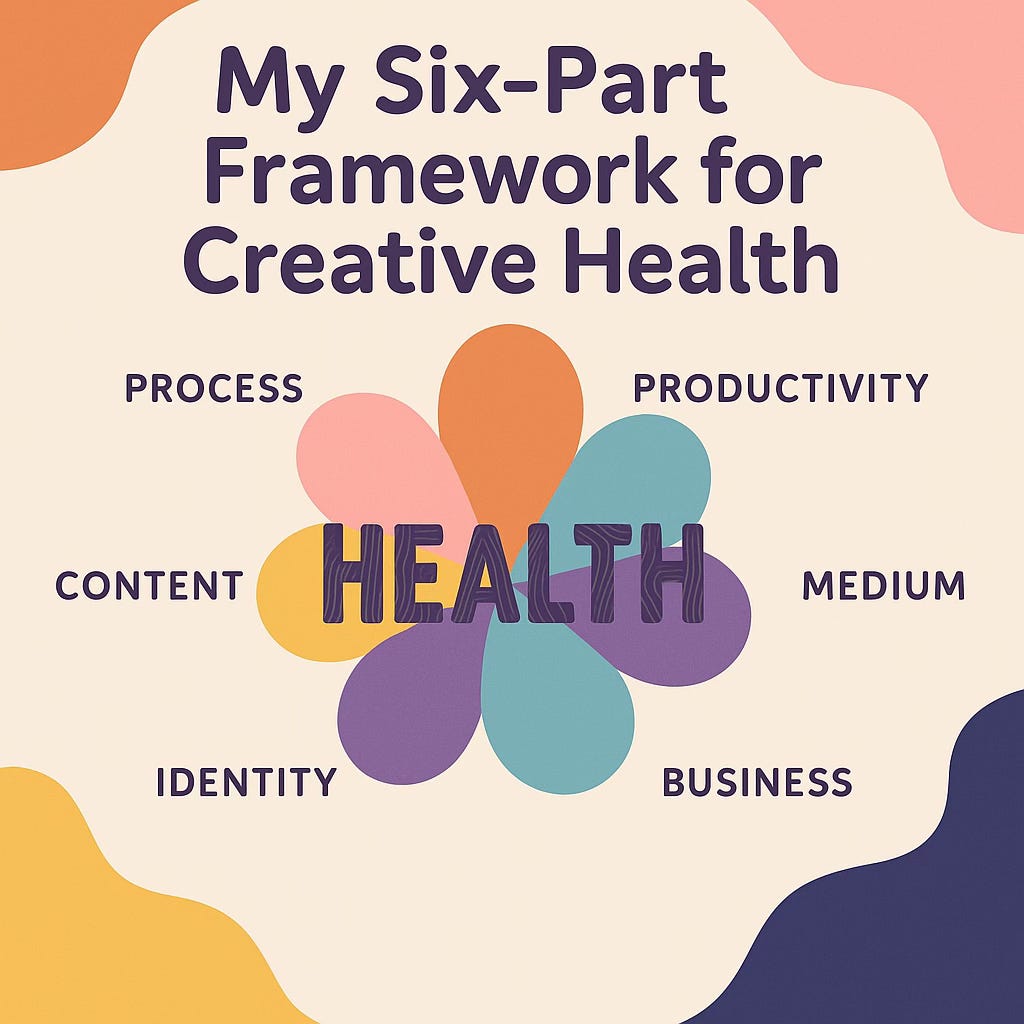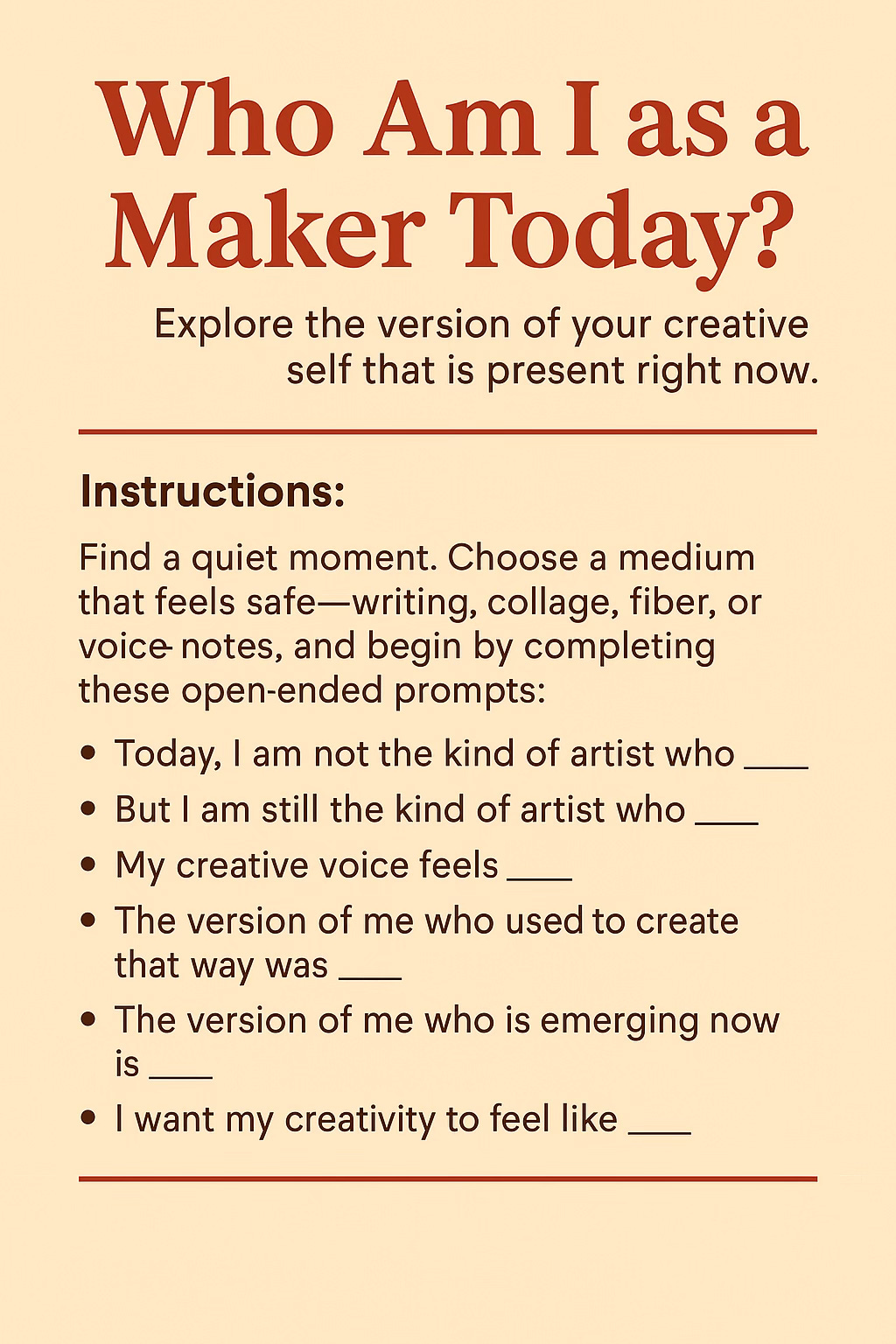Creative Identity in Crisis: Rebuilding the Self Through Psychological Insight and Practice
When your creative voice feels unfamiliar, you do not have to find your way alone. This is a space to reimagine your process, restore trust in your work, and begin again.
There are moments in a creative life that stop you in your tracks. Not because the inspiration has dried up, but because something more fundamental has shifted. You no longer recognize yourself in the work. The creative identity you once wore with confidence begins to feel like a costume you are no longer comfortable in. It pinches at the seams. It fails to move with you. You are not blocked exactly. You are disoriented. Something inside is asking to be acknowledged and integrated, yet you do not yet have the language for it.
I have experienced this rupture personally. During one extended period of illness, I could no longer access the voice I had always relied upon. I was still writing, still making things, still showing up to the page. But none of it felt like mine. The cadence had changed. The urgency was gone. Even the metaphors, once so intuitive, felt distant. I had to learn not to push through this unfamiliarity, but to sit beside it and listen. It wasn’t easy. I learned anyway.
Narrative Disruption and the Search for a New Story
When a person experiences creative identity rupture, what is truly being lost is not only a practice or a pace, but a narrative. This internal story may have once included assumptions like “I am a person who writes every morning,” or “My work has a certain voice, urgency, or message.” These stories organize our behavior and shape how we feel about the meaning of our work. When those internal expectations no longer hold true, whether because of life transition, chronic illness, trauma, or a shift in desire, the narrative fragments. The artist finds herself in a story that no longer feels linear or familiar, and this can lead to profound confusion or grief.
What makes this particularly painful is that creativity itself is often the method by which many of us make meaning, especially us writers. When the very tool we use to make sense of the world feels unavailable or unrecognizable, the disruption reverberates across every part of life. A client once told me, “I do not know who I am if I am not writing.” That is not an overstatement. For many of us, creativity is how identity is both expressed and discovered. When the capacity to create changes, the question is not only how to work again. It is also how to understand ourselves in the absence of our former voice.
This is where the therapeutic value of narrative reconstruction comes in. In my sessions, we often begin not by asking what you want to make, but by exploring the story you have been living inside. We listen for the dominant themes. We notice where the old narrative has become too narrow, too rigid, or too punishing. And then, together, we begin the slow process of authoring a new version. One that includes change. One that makes room for softness, uncertainty, contradiction, and grief. One that allows for a creative identity that evolves without abandoning what came before.
The Role of the Body in Identity Formation
Creative work is not purely cognitive. It is embodied. The body remembers patterns of expression, the muscle memory of process. When those patterns are disrupted by fatigue, pain, or neurodivergence, we may find ourselves cut off from the somatic cues that once signaled creative flow. This disconnection is not failure. It is a signal.
Somatic psychology teaches us to attend to the body's messages. If your breath shortens when you reach for the brush, or your shoulders tighten at the thought of returning to a manuscript, you are being told something important. My own body often speaks in fog and resistance. I have learned to take that seriously, not as a barrier, but as an invitation to slow down and listen.
Expression Without Expectation
In expressive arts theory, we return again and again to the idea that art is not about performance. It is about expression. During times of identity rupture, lowering the stakes can help rebuild connection.
I often return to fiber art when writing feels unreachable. The repetition of the stitch, the rhythm of the yarn between my fingers, brings me back into relationship with my creative self. The product is irrelevant. The point is contact.
This kind of practice is what I call a thread practice. It reconnects you to the thread of your creative identity even when the whole cloth has unraveled.
My Six-Part Framework for Creative Health
To help clients move through these difficult passages, I developed a reflective model that explores six interrelated dimensions of creative health. These are not diagnostic categories. They are lenses. Together, they offer a way to make sense of what feels chaotic.
Process: What happens when the way you used to work no longer works? This might be a shift from long sessions to shorter ones, or from structured outlines to more intuitive methods.
Productivity: How do you measure success when output becomes erratic? Learning to value creative presence over volume allows many clients to reclaim a sense of worth.
Medium: Sometimes the material needs to change. For a season, crochet became my language. It held what I could not yet say. The medium gave me a way back to expression without demanding articulation.
Content: What wants to be expressed now? Often, our creative identity is built around content that no longer feels aligned. We evolve. Our work must evolve with us.
Self-Perception: How do you see yourself in relation to your creativity? This is often the heart of the crisis. If you have always called yourself a poet, what happens when you no longer feel like one?
Sustainability: Does the life you are trying to maintain support your health, your creativity, your values? Real growth happens when we release unsustainable expectations and begin again from truth.
Making Meaning in the Rupture
A crisis of identity is, ultimately, a crisis of meaning. It asks who you are now that you no longer create in the same way. And more importantly, it asks who you are becoming.
In my work with clients, we do not rush to answer that question. We hold space for it. We use reflective prompts, sensory practices, and narrative exploration to make contact with the self who is waiting to emerge. We do not force reintegration. We facilitate it. The process is slow, but it is never without momentum.
If your creative identity feels fragile or fragmented, you are not alone. These transitions are real. And they are survivable. You do not have to go back to what no longer fits. You are allowed to build something new.
Book Your Session
Sessions are held over Zoom, with alternative formats available (email/text-based coaching for those who prefer it).
Don’t see a time that works for you? Send me an email and we’ll work something out.
Your creativity has not left you. It is simply inviting you into a different relationship. You are still an artist. You are simply becoming one in a new form.
If you read this far, perhaps you find value in this work. The work takes work.
Support it if you are able to do so:








THIS is what I needed to read today.
Thank you, Kathryn. I am finding your insights on shifting creative identity to be really useful at the moment! ♡